The Buzz on Bees | The Hive, The Honey, The Hope
There’s nothing like the taste of fresh, sweet, local honey, but if you’ve read the news recently you may have learned of the declining populations of honeybees. Around the world, beekeepers and scientists are noticing that these insects aren't thriving, and although no one singular cause has been pinpointed, the combination of disease, parasites, insecticides, and habitat loss are the focus of research. In response to the growing threat, people in cities and the countryside alike are starting their own beekeeping projects. Some are planting floral delights for pollinators, others are adopting a hive in their backyards or rooftops. Share these following delightful—and informative—resources with your community of readers to raise awareness about one of our most buzzworthy insects.
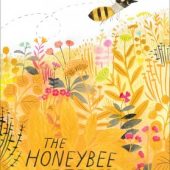 The Honeybee. by Kirsten Hall. illus. by Isabelle Arsenault. S. & S/Atheneum. May 2018. $17.99. ISBN 978-1481469975. PreS-Gr 2–Hall's rhyming text circles through a day in the life of a honeybee while surrounding animals scurry and poke about. She keeps it simple, but adds short references to some important complexities such as the waggle dance and clustering. Employing a muted palette against the color of bright yellow pollen, Arsenault’s warm illustrations will encourage readers to further appreciate the creature: it’s a beautiful introductory book that open the minds and hearts of youngsters. The last page builds bee awareness by offering five ways to support honeybees, including planting flowers and conquering personal fears.
The Honeybee. by Kirsten Hall. illus. by Isabelle Arsenault. S. & S/Atheneum. May 2018. $17.99. ISBN 978-1481469975. PreS-Gr 2–Hall's rhyming text circles through a day in the life of a honeybee while surrounding animals scurry and poke about. She keeps it simple, but adds short references to some important complexities such as the waggle dance and clustering. Employing a muted palette against the color of bright yellow pollen, Arsenault’s warm illustrations will encourage readers to further appreciate the creature: it’s a beautiful introductory book that open the minds and hearts of youngsters. The last page builds bee awareness by offering five ways to support honeybees, including planting flowers and conquering personal fears.
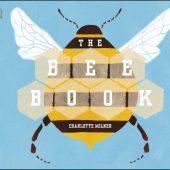 The Bee Book. by Charlotte Milner. illus. by author. DK. Feb. 2018. $15.99. ISBN 9781465465535.
The Bee Book. by Charlotte Milner. illus. by author. DK. Feb. 2018. $15.99. ISBN 9781465465535.
Gr 2-4–Once a child can read independently, this book will serve as an accessible resource for honeybee facts. With accurate answers to common questions (“What does a honeybee do when it’s cold?”), readers learn about the life cycle of a bee and what happens in the hive. Blocks of information make it easy for children to absorb facts without feeling overwhelmed. A strong emphasis is placed on what humankind can do to help the bees. There is an easy set of instructions to make a bee hotel, and plenty of accurate scientific information to keep young researchers engaged.
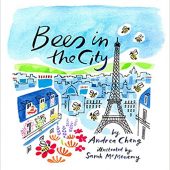 Bees in the City. by Andrea Cheng. illus. by Sarah McMenemy. Tilbury House. 2017. $17.95. ISBN 9780884485209.
Bees in the City. by Andrea Cheng. illus. by Sarah McMenemy. Tilbury House. 2017. $17.95. ISBN 9780884485209.
Gr 1-4–This is a great book to share with urban students; not only will it make honeybees more relevant to them, it may also inspire them to become a rooftop beekeepers. The story opens as Lionel, licking honey from his fingers, calls his Aunt Celine, who explains that many of her bees died over the winter. In an effort to help with the plight of the bees, Lionel, living in Paris, takes the steps necessary to relocate his country hive to the rooftop of his apartment building. Readers learn about the insect's struggles as well as the skills and steps necessary to communicate with neighbors and supervisors before starting an amateur hive. It’s a simple story with a powerful impact.
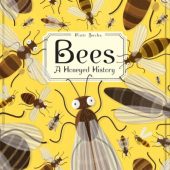 Bees: A Honeyed History. by Piotr Socha. Abrams. 2017. $17.95. ISBN 9781419726156.
Bees: A Honeyed History. by Piotr Socha. Abrams. 2017. $17.95. ISBN 9781419726156.
Gr 3-6–The combination of hundreds of facts, short anecdotes, and detailed illustrations create a delightful learning experience for independent readers. Students can either scour the illustrations independent of the text in this oversize book, or dig deeper and discover the explanations behind the pictures. This is not a book to be read during one sitting; it is closer to a kid-friendly, one-volume, hand-illustrated encyclopedia. The unique coverage of beekeeping in Ethiopia and Cameroon is wonderful, as is the illustration of humans hand-pollinating in Sichuan. The final spread ("The Daily Buzz") compiles quirky facts (“bees prefer caffeinated nectar”) that will amuse even the most seasoned beekeeper.
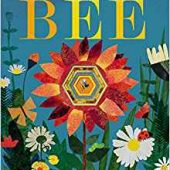 Bee: Nature’s Tiny Miracle. by Patricia Hegarty. illus. by Britta Teckentrup. Little Tiger Kids. 2016. $23.40. ISBN 9781848692886.
Bee: Nature’s Tiny Miracle. by Patricia Hegarty. illus. by Britta Teckentrup. Little Tiger Kids. 2016. $23.40. ISBN 9781848692886.
PreS-Gr 2–This well-designed, beautifully illustrated storybook incorporates paper-cut, layered hexagons allowing readers to zoom in on a tiny, worker honeybee. The rhyming text flows effortlessly as children watch the world carry on as the honeybee remains on task. On the versos of the pages, the rest of the hive gathers, each bee tucked neatly into a separate paper-cut hexagon. It's a noteworthy approach to highlight the efficient, perfect shape of a honeycomb. Additionally, the message is clear without being preachy: “For every plant and flower you see, was given life by one small bee.” A solid read-aloud choice.
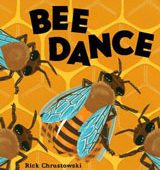 Bee Dance. by Rick Chrustowski. Holt. 2015. $18.99. ISBN 9780805099195.
Bee Dance. by Rick Chrustowski. Holt. 2015. $18.99. ISBN 9780805099195.
PreS-Gr 2–Through his spare text, the author offers a simple understanding of the intricate waggle dance that honeybees use to communicate the location of a food supply. His large, bright illustrations depict the path of a honeybee as she discovers a nectar-filled prairie. From here, she gathers food and returns to the hive. As she shares the location (Chrustowski outines a large, purple figure eight over the golden honeycomb), the bees watch, then fly back to the prairie and go to work. The final page gives the scientific explanation of the waggle dance that may be more advanced than the reading level of the book's intended audience.
Free Online Resources
Honeybee Centre (Canada) lists beekeepers who offer tours and field trips to students. The site also provides worksheets, teaching resources, and outside links to more information.
Buzz About Bees is a blog with bee-themed puzzles and posters.
10 Facts About Honeybees. National Geographic Kids.
Kids Learn Why Bees Are Awesome National Geographic. A two-minute YouTube video featuring the Sweet Virginia Foundation, Michelle Obama, and others.
Pamela Schembri is School Library Media Specialist at Horace Greeley High School in Chappaqua, NY, an SLJ reviewer, and a beekeeper.
RELATED
The job outlook in 2030: Librarians will be in demand
The job outlook in 2030: Librarians will be in demand
ALREADY A SUBSCRIBER? LOG IN
We are currently offering this content for free. Sign up now to activate your personal profile, where you can save articles for future viewing






Add Comment :-
Be the first reader to comment.
Comment Policy:
Comment should not be empty !!!